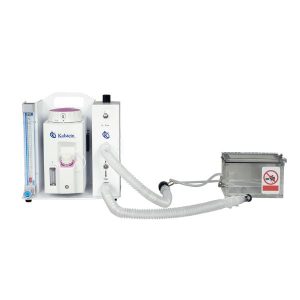In the world of veterinary medicine, anesthesia plays a fundamental role during the development of more intrusive clinical practices. Its main objective is to prevent pain in animals during medical and surgical interventions. However, do we really know the differences between local and general anesthesia in the veterinary field? Join us on this fascinating and essential journey.
Local Anesthesia: What is it and when is it used?
Local anesthesia is that which is applied directly to a specific area of the body, allowing the patient to maintain consciousness during the medical procedure. In veterinary practice, it is used for minor interventions or diagnoses where temporary immobility of the area to be treated is required, such as sterilization, dental extractions, or deep wound cleanings.
Advantages of Local Anesthesia
Local anesthesia is the preferred option in numerous cases due to several advantages. It allows a rapid recovery of the animal after the intervention, does not generate the side effects associated with general anesthesia and is much more economical. This option is safe and effective, as long as it is used in the appropriate procedures.
General Anesthesia: A Step Further
Unlike local anesthesia, general anesthesia induces a state of total unconsciousness in the animal. This type of anesthesia is used in more complex and invasive interventions, such as technically difficult surgeries, or in animals that may exhibit aggressive or anxious behavior before the intervention. In addition, general anesthesia allows total control over the animal’s vital functions during the intervention.
Factors to Consider with General Anesthesia
Despite its advantages, general anesthesia can present some risks. The most common side effects include nausea, vomiting, hypothermia, and respiratory difficulties. For this reason, it is crucial that after the application of general anesthesia, a thorough follow-up of the animal is carried out until they regain their consciousness and stability.
Local vs General Anesthesia
In conclusion, both local and general anesthesia play an indispensable role in veterinary medicine. Both have their place and their purpose, and the choice between one or the other will depend on the need and the professional evaluation of the vet.
The revolution of anesthetic techniques has made it possible to carry out procedures that, without their existence, would be highly traumatic for animals. Hence the importance of the staff in charge having in-depth and up-to-date knowledge to ensure the best possible care for our beloved pets. In this sense, it is clear that anesthesia, both local and general, is an indispensable tool in any modern veterinary clinic.
As always, education and constant preparation are the best allies to improve practices in veterinary medicine and ensure the health and well-being of animals.

